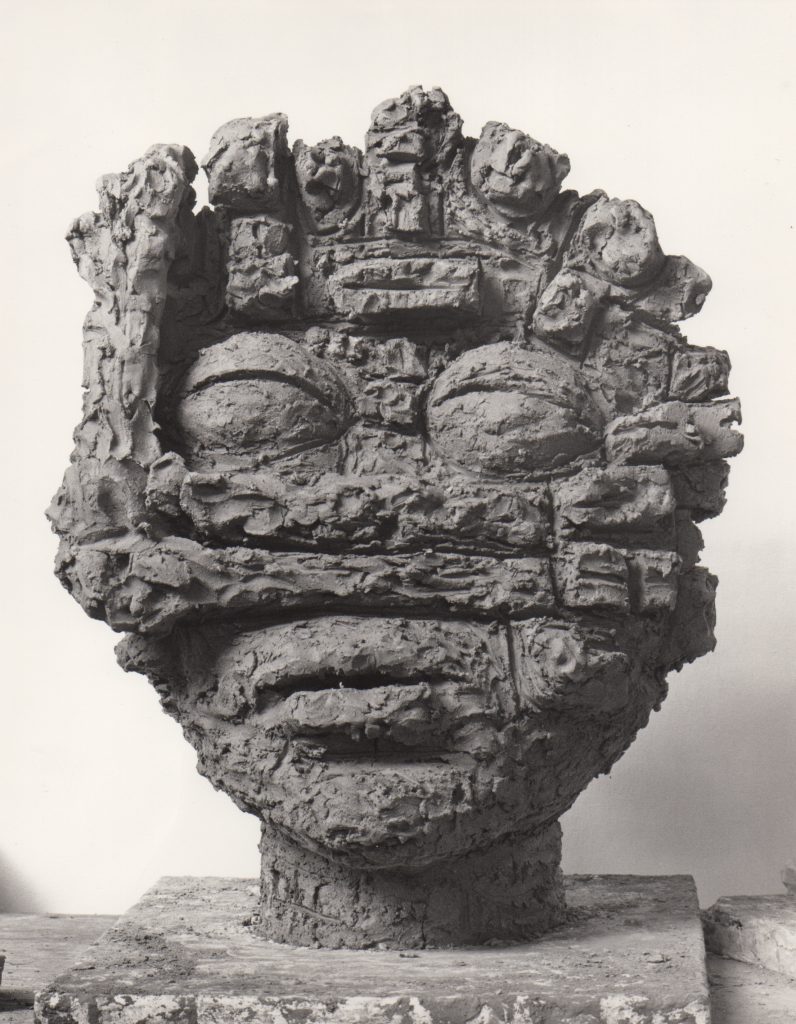
Dream, terra-cotta, 24x19x10, 1986
Kadish began his career. Judd Tully tells us in his snippy and enlightening catalogue essay. as a muralist, first under the Mexican painter Siquieros, then with the W.P.A. Federal Art Project. He was close to Philip Guston and the Pollock brothers. Jackson and Sandy. and, although seemingly geared for a high-profile career as an Abstract F.xpressionist, found himself and his family living on a dairy farm in New Jersey. which kept him away from the bright lights of the city until the mid-’50s. Even then his tal-ents were not widely recognized. though there was the occasional compliment from Thomas Hess or an exhibition at one of the cooperative galleries on East 10th Street.
Suddenly. in 1961, Kadish’s one-man exhibition at Poindexter Gallery was the turning point of his career. The work he was doing around this time, shown at Artists’ Choice (Borgenicht showed his famous “Heads” in an equally fine and well-researched exhibition), was anthropomorphic, iconoclastic and mythically originated as in “Queen of Darkness” (Moloch II) (ca. 1960), a totemistic bronze, 40 inches high, of mottled, archaic-looking matter. A queen of darkness for sure, and one who was an early formulation of Kadish’s de Kooningesque love-hate relationship with woman.
An early head from 1962 set the tone for the many to come: a terra-cotta jack-o’ lantern with two holes for eyes, a slit for a nose and various chunks of clay slapped along its top and sides. It compares easily to a 1985 head at Borgenicht: again in terra cola, eyes like swollen nuts, nose missing or replaced by a raised area of clay that goes up the left side of the head.
Throughout Kadish’s career a certain darkness• even despair. of vision permeates the work. Even when the same woman who is seen in the early years as a queen of darkness can in 1968.69 be seen as a fecund terra-cotta relief Earth Mother or in 1975 as the fat, succulent nude Gerda. Kadish’s tone changed surprisingly little once he hit his stride in the early ’60s. It is largely one that proceeds from darkness, despite the occasional foray into realms of light. Kadish’s vision is strong, not for the faint of heart or for the lover of fine things. We are simply required to accept it on his own terms—or turn away in search of more pleasurable vistas.